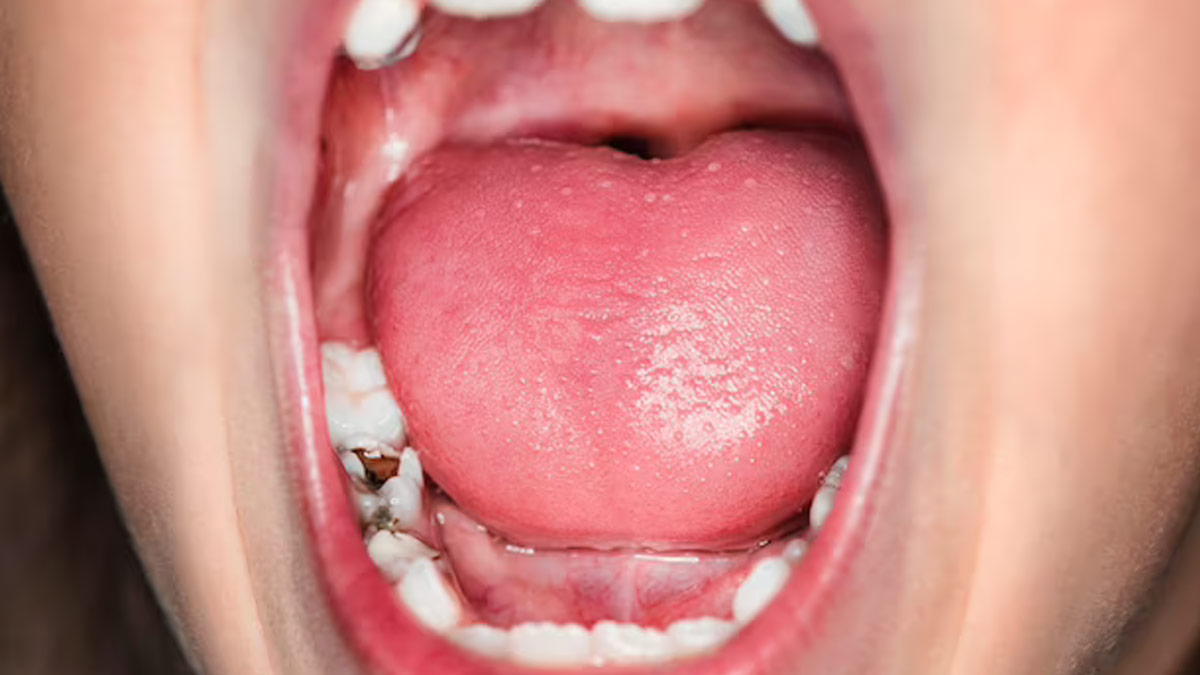
In a world where laughter knows no bounds and joy fills the air, the innocence of childhood shines through radiant smiles. Yet, lurking beneath those charming grins lies a hidden menace; cavities. Yes, those little holes that invade tiny teeth and transform gleeful giggles into painful moans. As parents and guardians, we must protect our little ones from this dental foe. But first, we must unravel the mystery behind childhood cavities, exploring the common causes that often catch us off guard.
In this article, Lt Gen Dr Vimal Arora, Chief Clinical Officer, Clove Dental Care, lists the primary factors contributing to childhood cavities and effective preventive measures.
According to the Centers for Disease Control and Prevention, more than half of kids aged 6 to 8 have cavities in at least one of their baby (primary) teeth.
Causes Of Childhood Tooth Decay

Poor Oral Hygiene
Lt Gen Dr Arora said, “Insufficient brushing and flossing are major culprits in the development of tooth decay. Children often lack the dexterity and discipline to thoroughly clean their teeth, allowing harmful bacteria to thrive.” Encouraging regular and proper oral hygiene practices, such as brushing twice a day for two minutes with fluoride toothpaste and flossing daily, is vital for cavity prevention.
Also Read: Toothbrush Could Be The Most Unhygienic Thing In Your Bathroom, Here Are 5 Mistakes To Avoid
Sugary Diet
Excessive consumption of sugary foods and beverages significantly increases the risk of cavities. Lt Gen Dr Arora added, “Sugars provide nourishment to harmful bacteria in the mouth, which produce acid that erodes tooth enamel. Limiting the intake of sugary snacks, soda, and fruit juices can help safeguard children's oral health. Encouraging healthier alternatives like fresh fruits and water can make a positive impact on their dental hygiene.”
Bottle Feeding and Prolonged Pacifier Use
Frequent bottle feeding or allowing a child to fall asleep with a bottle in their mouth can lead to a condition known as ‘baby bottle tooth decay’. Lt Gen Dr Arora highlighted, “The sugars in milk, formula, or juice can pool around the teeth, promoting bacterial growth and tooth decay.” Similarly, prolonged pacifier use can cause misalignment of the teeth, creating spaces where food particles can accumulate. Limiting bottle use and weaning off pacifiers at an appropriate age can help prevent these issues.
Lack of Fluoride
Tooth enamel can be made more resistant to acid attacks with fluoride, a mineral that strengthens it. Insufficient fluoride exposure can leave teeth vulnerable to decay. Lt Gen Dr Arora recommended using fluoridated toothpaste and drinking fluoridated water can significantly reduce the risk of cavities. It is important to note, however, that excessive fluoride intake can lead to dental fluorosis, a condition that causes tooth discolouration. Therefore, it is crucial to follow recommended fluoride guidelines.
Also Read: Why Is Ice Cream Helpful Post Tooth Extraction, Expert Explains
Infrequent Dental Check-ups

Regular dental check-ups are crucial for detecting and addressing oral health issues, including cavities, at an early stage. Lt Gen Dr Arora added, “Some parents may overlook the importance of dental visits until a problem arises. Routine examinations and professional cleanings allow dentists to monitor a child's oral health, provide preventive treatments like dental sealants, and educate both children and parents on proper oral care techniques.”
Genetics and Family History
Genetics and family history can play a role in a child's susceptibility to cavities. Some individuals naturally have thinner enamel or fewer protective factors against decay. Understanding the family's dental history can help identify potential risks and motivate proactive preventive measures.
Disclaimer
The information provided in this article is by a registered healthcare professional. However, we advise you to consult your expert for a treatment tailored to your child's needs.







